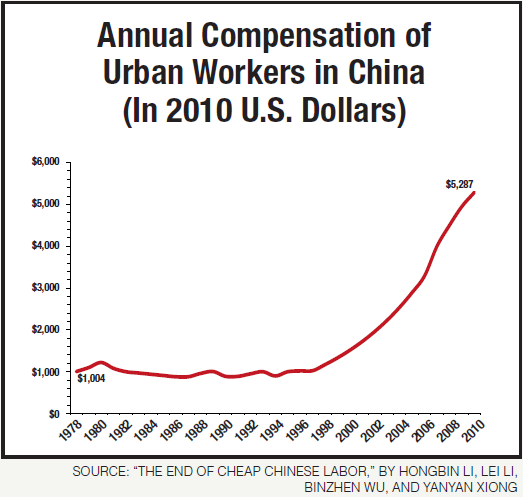Kevin Hassett of the American Enterprise Institute explains in the latest print edition of National Review why politicians of all stripes ought to stop blaming China for the declining number of American manufacturing jobs.
Politicians of both parties have tended to bemoan the decline in manufacturing employment, treating it as a sign of failure. This observation itself is questionable, as a dollar earned designing software is just as valuable as a dollar earned in manufacturing, but the worst part of the conversation has been the blame game and the trade war it threatens. Listen to either party, and the entire swing is attributable to the evil actions of the currency-manipulating Chinese, who have apparently been running an organized-crime syndicate specializing in job theft.
To be sure, low-wage and labor-intensive manufacturing activities such as product assembly have shifted to China over the past few decades. Chinese workers were so numerous and so cheap that it was impossible for labor-intensive U.S. firms to compete. The latest research, however, suggests that the shift toward China is likely to be a much smaller story in the future.
While it is true that wages in China are still lower than those in the U.S., they are rising quickly. The nearby chart shows the average urban wage in China, as calculated in a recent article by Hongbin Li, Lei Li, Binzhen Wu, and Yanyan Xiong in the Journal of Economic Perspectives. In 1978, a typical Chinese manufacturing worker made $1,004 in inflation-adjusted dollars— a number that barely budged for almost 20 years. In 2010, he made $5,287. Although Chinese compensation would still look paltry to most American workers, it is much more costly to employ a Chinese worker today than it was in 1998—about five times as expensive.
This shift will affect the flow of manufacturing jobs for two main reasons. First, while Chinese labor is still cheaper than U.S. labor, the gap is closing rapidly and will continue to close. A manufacturer planning a new plant will have to factor future wages over the life of the plant into his calculus, and the U.S. will look increasingly attractive by that measure. Second, because of the recent sharp increase, Chinese wages are much higher than wages in countries such as Indonesia and Thailand. To the extent that labor-intensive U.S. activity is displaced by foreign production, it is much less likely that China will be seen as the culprit.



